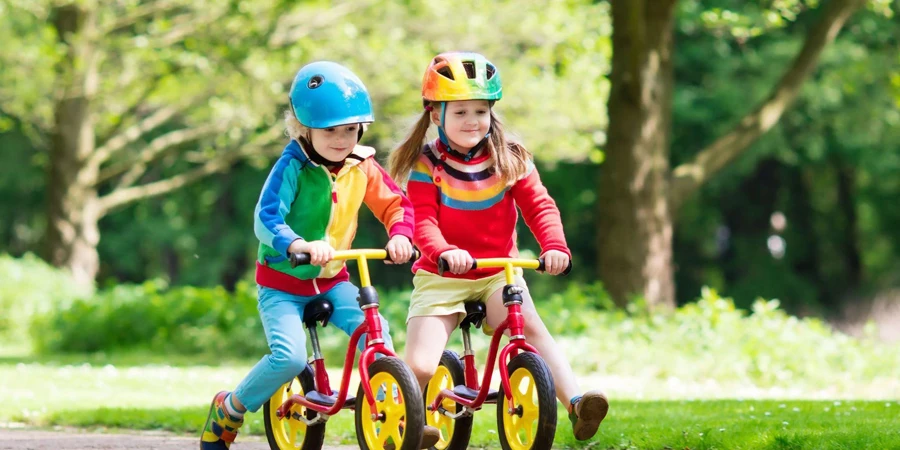Table of Contents
Introduction
Market Overview
Considerations of Selection
Conclusion
Introduction
In 2024, balance bikes continue to revolutionize early childhood cycling, rapidly gaining popularity in the sports industry for their unique blend of fun and functionality. These pedal-less wonders are not only pivotal in developing a child’s balance and motor skills but also serve as a crucial first step in a lifelong journey of cycling. Their appeal spans across age groups, attracting toddlers eager for adventure and parents seeking safe, durable options. This surge in demand is reshaping the market landscape, with a diverse array of models catering to specific needs and preferences. For business professionals and online retailers, understanding the nuances of these bikes – from design innovations to safety features – is key to making informed purchasing decisions that resonate with contemporary consumer trends.
Balance Bikes Market Dynamics
The balance bike market in 2024 is experiencing a significant upward trajectory, marked by a robust Compound Annual Growth Rate (CAGR) of approximately 7.74%. This rapid growth is projected to escalate the market size by an impressive USD 1.02 billion between 2023 and 2028. A notable shift in this market is the rising adoption of electric balance bikes, which offer young riders an enhanced and assisted riding experience. These electric models are gaining popularity due to their ability to combine the traditional benefits of balance biking with modern technological advancements.
The market is segmented into two primary types: metal and wood bikes. Metal bikes, known for their durability and strength, continue to hold a significant share. In contrast, wood bikes, appreciated for their eco-friendly materials and aesthetic appeal, are carving a niche in the market. Geographically, the market is witnessing substantial growth in regions like North America, Europe, APAC, South America, and the Middle East and Africa, with North America contributing a notable 36% to the market growth. The key players in the balance bike market include Strider, WOOM Bikes, Chicco, and KaZAM Balance Bikes.

Considerations of Selection
Age-Appropriateness:
When selecting balance bikes for various age groups, it’s important to consider the developmental and physical abilities typical of each age range.
6-18 Months: At this early stage, children are typically mastering walking and developing basic motor skills. Balance bikes are generally not recommended for this age group, as most infants and young toddlers have not yet developed the coordination and strength needed to control and benefit from a balance bike.
18 Months – 2 Years: This is an ideal time to introduce a balance bike. Children in this age bracket are developing better coordination and can walk confidently. Balance bikes for this group should have the lowest seat settings to accommodate their shorter inseams and should be lightweight for easy maneuvering.
2 – 3 Years: Children of this age are well-suited to start using balance bikes. They usually possess the motor skills needed to maneuver these bikes effectively. Adjustable seats and handlebars are beneficial at this stage due to the rapid growth children experience. Bikes should be lightweight and simple to control, fostering independence and confidence in young riders.
3 – 4 Years: At this stage, children are typically more confident and capable of handling slightly larger and more complex balance bikes. Bikes with additional features, such as hand brakes, become more appropriate. However, the adjustability of the seat height and handlebars remains crucial to accommodate the child’s growing body and to ensure comfortable and proper riding posture.
4 – 5 Years: By this age, children generally have well-developed motor skills and a higher level of confidence. They are suitable for more advanced balance bikes that closely mimic traditional bicycles in terms of feel and design. Larger wheels and features that introduce elements of a standard bike can be appropriate, preparing them for the eventual transition to pedal bikes.
5+ Years: For children over five, especially those who started with balance bikes late or are not yet ready for pedal bikes, larger balance bikes with bicycle-like features are suitable. Children in this age group may be transitioning to pedal bikes, so convertible balance bikes that can adapt to their growing skills can be a practical and cost-effective choice.
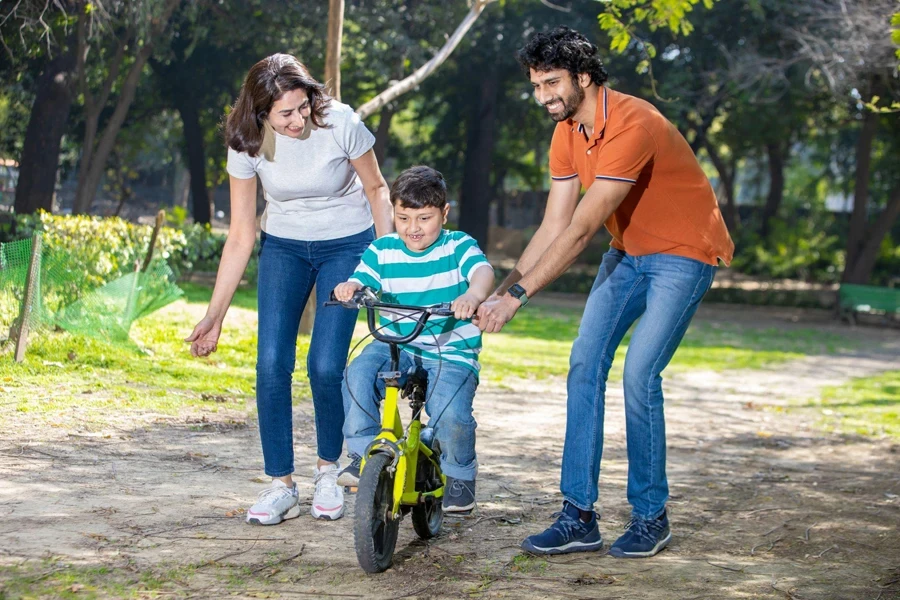
Safety features:
Safety features are a crucial aspect of balance bike design, ensuring that young riders have a secure and enjoyable experience.
Hand Brakes: Hand brakes on balance bikes are not just beneficial for added control and safety, but they also prevent wear on children’s shoes and prepare them for the transition to pedal bikes. Typically, preschoolers around 2.5 to 3.5 years develop the coordination necessary to use hand brakes effectively. Introducing hand brakes at this stage ensures a smoother transition to traditional bikes, as kids won’t need to relearn this skill later.
Turning Limiters: Turning limiters on balance bikes restrict the handlebar and front wheel from full rotation, preventing overly sharp turns and enhancing safety for beginners. They also protect the brake cable from twisting on models with handbrakes. Despite some concerns about limiting steering skills development, most modern balance bikes with limiters are designed to provide enough motion range for effective learning.
Protective Bumpers on Handlebar Grips: Rubber grips with knobby ends can protect children’s hands when the handlebars run into walls or if they fall. They also prevent the handlebars from scratching cars and other surfaces. Ergonomically shaped grips, found on high-end bikes, provide maximum comfort for little hands.
Footrest Design: While not a necessity, well-designed footrests can enhance comfort during gliding. A good footrest should be positioned back under the seat and out of the way of the child’s stride to avoid interference with their running or walking motion.
Weight and Frame Design: The weight of the balance bike is significant for young riders. The ideal weight of a balance bike should not exceed 30% of the child’s weight. For toddlers and preschoolers, a bike weighing over 10 lbs may be challenging to manage, whereas bikes around 9 lbs or less are generally more suitable.The frame material, whether it’s aluminum alloy, steel, or wood, also affects the bike’s weight and durability.
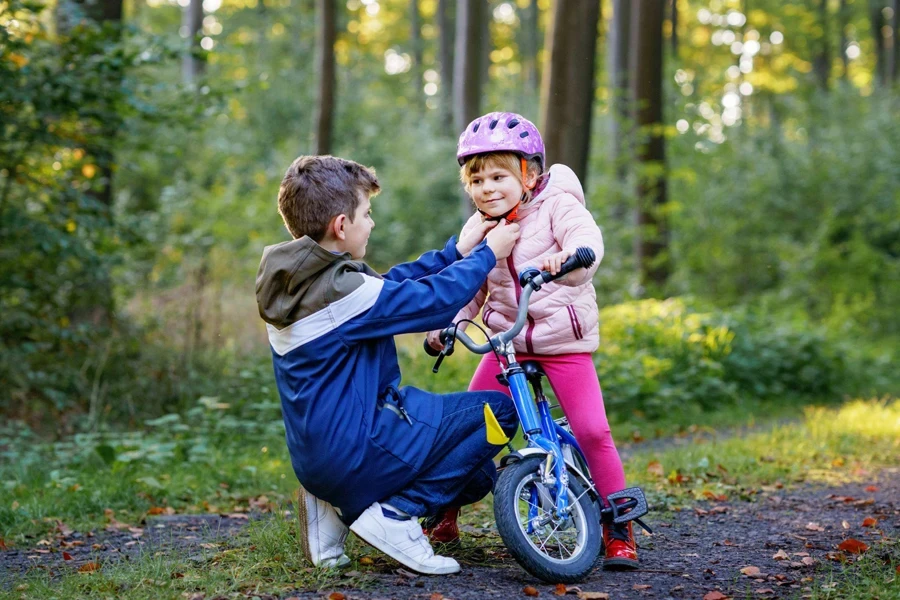
Materials’ Effect:
Aluminum Alloy:
- Weight: Aluminum alloy balance bikes are lightweight, making them easy for children to handle and maneuver. The reduced weight also means less effort for children to propel and control the bike.
- Safety: Being lightweight doesn’t compromise the bike’s strength or durability. Aluminum is resistant to rust, adding to the bike’s longevity. These bikes can withstand the rigors of active use without compromising structural integrity.
Steel:
- Weight: Steel balance bikes are typically heavier than aluminum ones. This added weight can make them more challenging for young children to control, especially for smaller or younger riders.
- Safety: Steel is known for its robustness. A steel bike’s sturdiness offers stability, which can be reassuring for beginners. However, it’s prone to rust if not properly maintained, which can impact long-term durability.
Plastic/Composite Materials:
- Weight: Bikes made from plastic or composite materials are usually the lightest. This extreme lightness can be advantageous for very young or small children just starting out.
- Safety: While these materials offer the advantage of being rust-proof and often more affordable, they may not provide the same level of durability and stability as metal bikes. The build quality can vary widely, impacting their longevity and performance.
Wood:
- Weight: Wooden balance bikes are generally lightweight, similar to aluminum bikes. They are easily manageable for children but can vary in weight depending on the type of wood used.
- Safety: While offering a unique aesthetic and eco-friendly appeal, wooden bikes might lack some of the durability of metal bikes. They are susceptible to wear and damage from elements like water unless treated or manufactured with high-quality, durable wood like marine plywood.
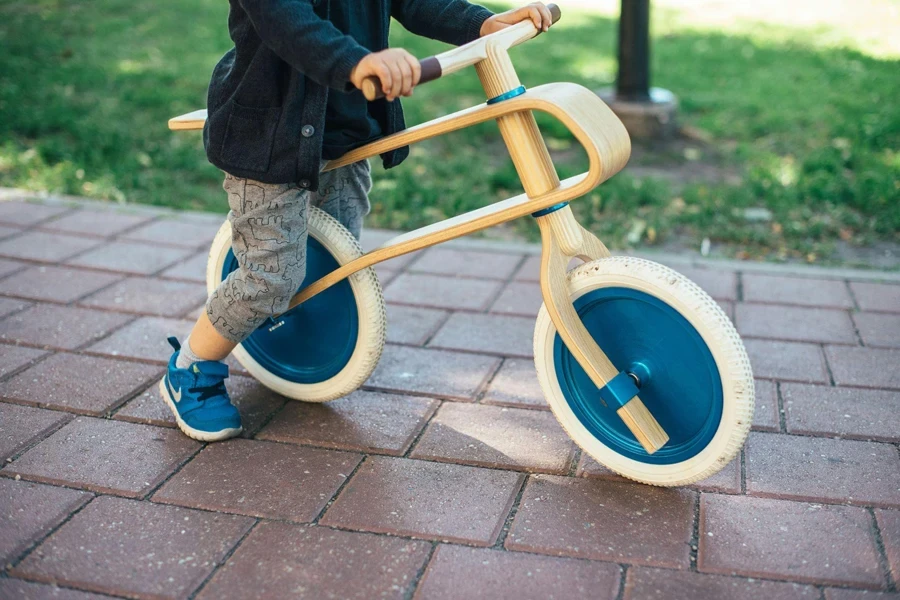
Adjustability:
Adjustability in balance bikes translates to a longer period of usability as it can grow with the child. This not only offers better value for money but also ensures that the bike remains comfortable and effective for teaching balance and coordination over several years.
Seat Height Adjustability: The seat height is a critical factor for comfort and efficiency in riding a balance bike. It should be set so that the child, while seated, can place their feet flat on the ground with a slight bend in the knees. This setup enables efficient movement and balance control. To cater to a child’s growth, balance bikes come with adjustable seats, allowing the seat height to be increased as the child grows. The ideal balance bike has a seat height range that starts 0.5″ to 1″ less than the child’s inseam and can be raised by at least 2″ above their current inseam for prolonged usability.
Handlebar Height Adjustability: The handlebar height is equally important to ensure a comfortable and effective riding experience. Handlebars should be easily reachable, allowing the child to steer without strain. Adjustable handlebars accommodate a child’s growth, ensuring the bike remains suitable over time. Properly adjusted handlebars aid in maintaining control and stability of the bike, enhancing the overall riding experience.
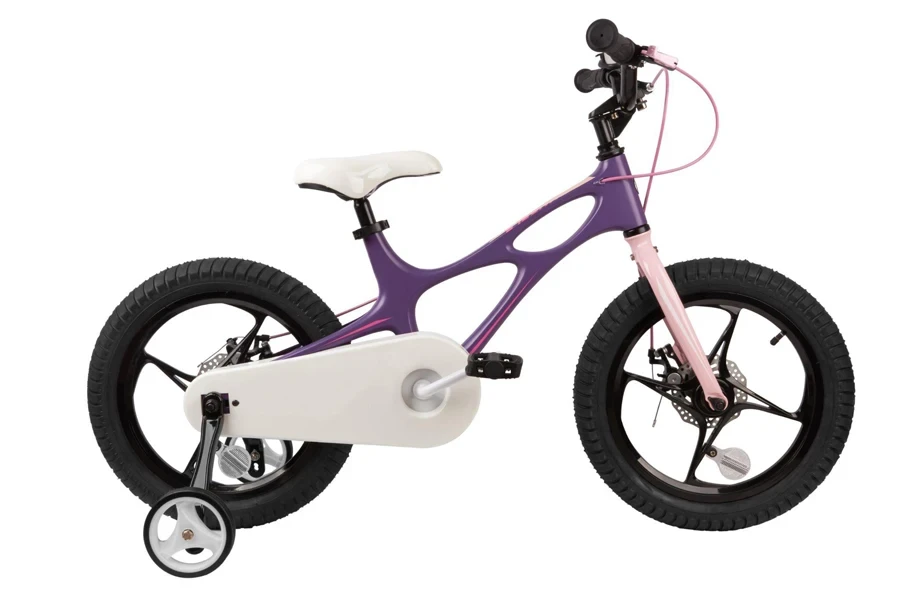
Tires:
The wheel type on balance bikes, notably the difference between foam tires and air-filled tires, plays a significant role in determining the bike’s suitability for various riding surfaces.
Air Tires: Known for their excellent cushioning, air tires act as shock absorbers, smoothing out bumps and providing a more comfortable ride on various terrains, including off-road paths. They offer superior traction on diverse surfaces, from sidewalks to trails, thanks to their rubber composition and ability to flex and adapt. However, these benefits come with added weight due to metal rims and a higher maintenance requirement, as air tires can lose air and are prone to punctures. While they generally cost more, their performance and versatility justify the investment for adventurous or all-terrain riding.
Foam Tires: Foam tires stand out for their maintenance-free nature; they never go flat and are always ready to use, making them a hassle-free option. Their lightweight nature is especially advantageous for smaller riders, facilitating easier handling and maneuverability. On the downside, foam tires offer limited traction, particularly on rough or slippery surfaces, and lack cushioning, which can result in a less comfortable ride on uneven paths. Although initially more affordable, their tendency to wear down and higher replacement cost can be a consideration.
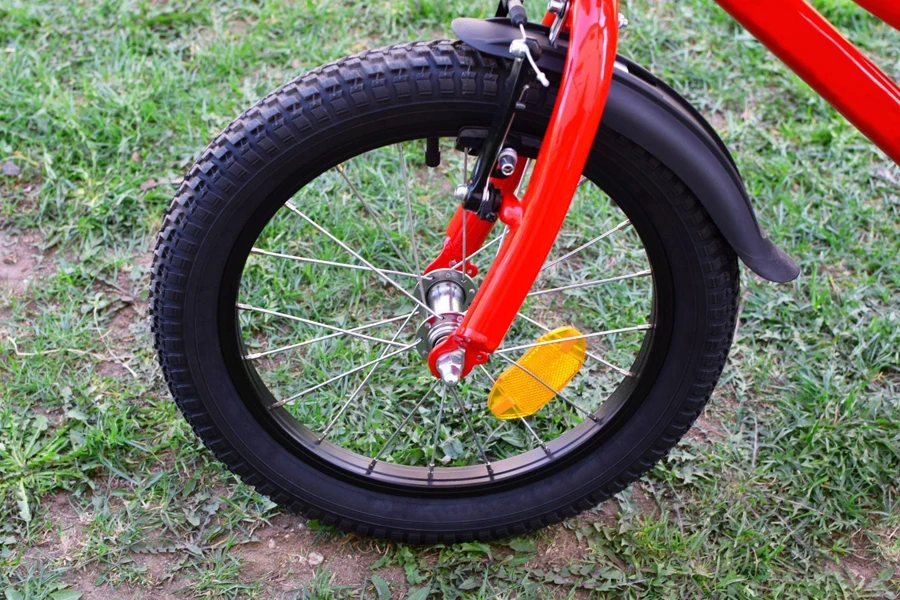
Conclusion
The balance bike market in 2024 has demonstrated remarkable growth and innovation, reflecting the evolving preferences and needs of young riders and their parents. These bikes, pivotal in developing early cycling skills, have expanded in variety, encompassing models that cater to different age groups, safety requirements, and riding conditions. For business professionals and online retailers, staying informed about these aspects is crucial in selecting and recommending the right balance bikes. The adaptability of these bikes to grow with the child, combined with their design and safety features, makes them a valuable and long-lasting choice for fostering the joys and skills of cycling from an early age.
